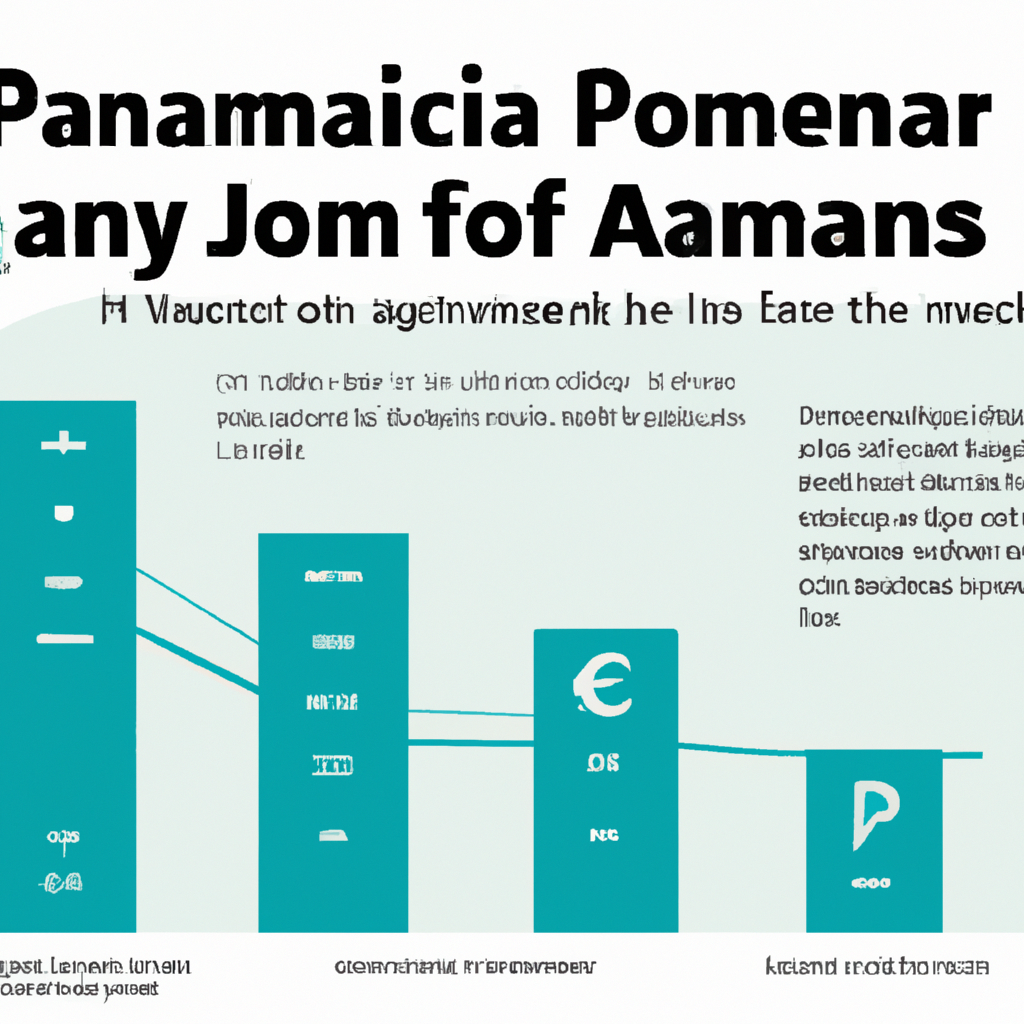Curious about the financial landscape in Panama? Wondering how the average household income stacks up in this vibrant Central American country? Well, you’re in luck! This article dives into the specifics, shedding light on the average monthly household income in Panama and giving you a sneak peek into the economic pulse of the nation. Whether you’re considering a move or simply want to expand your global awareness, this article is your ticket to understanding the financial dynamics in Panama. So grab a cup of coffee and get ready to explore!

This image is property of pixabay.com.
Overview of Panama’s Economy
Panama’s economy is characterized by a strong Gross Domestic Product (GDP) and diversified sectors. The country has experienced consistent economic growth in recent years, making it one of the fastest-growing economies in Latin America. The GDP of Panama is an essential indicator of the overall economic health of the country and is used to measure its productivity and standard of living.
Gross Domestic Product (GDP)
The GDP of Panama has steadily increased over the years, reaching $66.8 billion in 2020. This growth can be attributed to various factors, including Panama’s strategic geographical location, the Panama Canal, a well-developed services sector, and a stable political environment. The services sector, especially finance, transportation, and tourism, plays a significant role in driving the country’s economic growth.

This image is property of pixabay.com.
Key Sectors of the Economy
Apart from the services sector, Panama’s economy relies on other key sectors, such as agriculture, manufacturing, and construction. Agriculture contributes significantly to employment in rural areas and provides food security for the nation. The manufacturing sector mainly focuses on processing raw materials, including textiles, food products, and chemicals. Additionally, the construction sector has experienced rapid growth due to various infrastructure projects and real estate developments.
Employment and Labor Market
Panama has a well-functioning labor market, with a diverse workforce comprising both skilled and unskilled workers. The country has witnessed a decline in unemployment rates in recent years, indicating a favorable job market. However, the labor market still faces challenges such as underemployment and informal employment. Efforts are being made to enhance labor market policies, promote skills development, and ensure fair working conditions.

This image is property of pixabay.com.
Understanding Household Income
Household income refers to the total income earned by all members of a household, including wages, salaries, self-employment income, and other sources such as property rentals and investments. It is an important measure of the economic well-being and living standards of individuals and families.
Definition and Calculation
The average monthly household income is calculated by dividing the total annual income of all households by the number of households in Panama. This measure provides an estimation of the income level of the typical household in the country. It takes into account various sources of income, including wages, business profits, pensions, and social benefits.

Factors Affecting Household Income
Several factors can influence household income in Panama. These include education and skills, occupation and industry, gender disparities, ethnicity and race, and socioeconomic status. Higher levels of education and acquiring relevant skills often lead to better job prospects and higher income levels. The choice of occupation and industry can also impact income levels, as certain sectors tend to offer higher salaries and benefits.
Income Inequality in Panama
Income inequality refers to the unequal distribution of income among individuals or households within a country. In Panama, like many other countries, income inequality is a significant concern.

Gini Coefficient
The Gini coefficient is commonly used to measure income inequality. It is a statistical measure ranging from 0 to 1, where 0 represents perfect equality (everyone has the same income), and 1 represents maximum inequality (one person has all the income). In Panama, the Gini coefficient stood at 0.52 in 2020, indicating a moderate level of income inequality.
Causes and Consequences of Income Inequality
Income inequality in Panama can be attributed to various factors such as a lack of access to quality education, limited employment opportunities, and the concentration of wealth in certain sectors of the economy. Income inequality can have detrimental socio-economic consequences, including limited social mobility, increased poverty rates, and social tensions. It is crucial for the government to address these issues and implement policies to reduce income inequality.
Government Measures and Policies
The Panamanian government has implemented several measures and policies to address income inequality and improve household income levels.
Social Programs
The government has implemented various social programs aimed at reducing poverty and improving access to basic services. These programs include conditional cash transfer programs, subsidized healthcare, housing assistance, and food aid programs. These initiatives aim to provide a safety net for vulnerable households and uplift their living standards.
Minimum Wage Regulations
The government has established minimum wage regulations to ensure that workers receive fair remuneration for their labor. The minimum wage varies depending on the sector and occupation, with higher wages typically set for skilled workers. This helps to reduce income disparities and provide a decent standard of living for workers across different industries.
Tax System
The Panamanian tax system plays a role in redistributing income and bridging the wealth gap. Progressive income tax rates are implemented to ensure that high-income earners contribute a higher percentage of their income towards taxation. Additionally, the government provides tax incentives and exemptions for low-income individuals and small businesses to stimulate economic growth and alleviate the burden of taxation.
Estimating the Average Monthly Household Income
Estimating the average monthly household income in Panama involves analyzing data from various sources and employing specific methodologies.
Data Sources and Methodology
Data on household income in Panama is collected through household surveys conducted by national statistical agencies. These surveys gather information on income sources, household composition, and socioeconomic characteristics. The collected data is then analyzed, and statistical techniques are applied to calculate the average monthly household income.
Recent Trends in Household Income
Recent data suggests that household income in Panama has experienced modest growth in recent years. However, income growth has not been uniform across all households, with disparities persisting between different income brackets. The government continues to focus on implementing policies to promote income growth for all households and reduce income disparities.
Regional Variations in Household Income
Income levels and disparities vary across different regions of Panama.
Urban vs. Rural Areas
Income levels tend to be higher in urban areas compared to rural areas. Urban regions, such as Panama City and the Colon Free Zone, benefit from high-paying jobs and access to diverse economic opportunities. In contrast, rural areas face challenges such as limited access to quality education, healthcare, and employment opportunities.
Income Disparities between Provinces
There are significant income disparities between provinces in Panama. Provinces such as Panama and Colón, with their economic hubs and urban centers, tend to have higher income levels compared to more rural provinces. These disparities highlight the need for targeted policies and investments to reduce regional inequalities and promote inclusive economic development.
Comparisons with Other Countries
Comparing the average household income in Panama with other countries provides valuable insights into its economic standing.
Average Household Income in Latin America
Panama’s average household income is relatively higher than many other countries in Latin America. This can be attributed to the country’s strong economic performance, favorable business environment, and well-developed service sectors. However, income disparities remain a persistent challenge.
Panama’s Position in Global Income Rankings
On a global scale, Panama ranks as an upper-middle-income country based on its average household income. Its GDP per capita places it above the average for Latin America, indicating a relatively higher standard of living compared to many neighboring countries. However, it is essential to address income inequality to ensure sustainable and inclusive growth.
Impact of COVID-19 on Household Income
The COVID-19 pandemic has had significant effects on household income in Panama.
Effects of the Pandemic
The pandemic has led to widespread job losses, reduced working hours, and business closures across various sectors. This has resulted in a decline in household income for many families, especially those in vulnerable economic situations. The informal sector and self-employed individuals have been particularly affected by the economic fallout caused by the pandemic.
Government Response and Support
The Panamanian government has implemented various measures to mitigate the impact of the pandemic on household income. These include income support programs, financial assistance for businesses, and unemployment benefits. The government has also sought to stimulate the economy through infrastructure projects and investment in key sectors to create job opportunities and boost household income.
Socioeconomic Factors Influencing Household Income
Several socioeconomic factors influence household income in Panama.
Education and Skills
Education plays a crucial role in determining income levels. Higher levels of education and acquiring specialized skills tend to result in better job prospects and higher income. Access to quality education and training opportunities is essential for improving household income levels and reducing income disparities.
Occupation and Industry
The choice of occupation and industry can greatly impact household income. Certain sectors, such as finance, engineering, and IT, tend to offer higher-paying jobs. Additionally, the level of demand for certain occupations and the overall economic conditions within specific industries can affect income levels.
Gender Disparities
Gender disparities persist in the labor market, affecting household income. Women often face lower wages and limited opportunities for career advancement compared to their male counterparts. Closing the gender wage gap and promoting gender equality in the workforce are crucial for improving household income levels.
Ethnicity and Race
Ethnicity and race can also influence household income. Indigenous communities and Afro-Panamanians often face socio-economic disadvantages, including limited access to educational opportunities and employment discrimination. Addressing these disparities and promoting inclusion and diversity in all sectors of the economy is essential for reducing income inequalities.
Conclusion and Future Outlook
While Panama’s average monthly household income has shown steady growth, income inequality remains a significant challenge. The government’s measures, including social programs, minimum wage regulations, and a progressive tax system, aim to reduce income disparities and improve household income levels. However, more efforts are needed to address the underlying causes of income inequality, such as limited access to quality education and employment opportunities.
Strategies for income growth should focus on promoting inclusive economic development, investing in human capital through education and skills training, and creating an enabling environment for entrepreneurship and innovation. Addressing gender disparities and promoting diversity and inclusion can also contribute to more equitable household income levels. By leveraging its economic strengths and implementing targeted policies, Panama can move closer to achieving sustainable and shared prosperity for its citizens.
